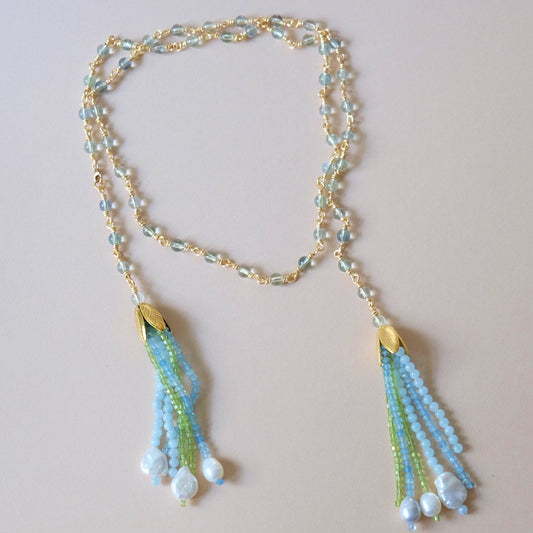Opal is a unique gemstone that is known for its striking play of colors. It is made up of tiny spheres of silica that diffract light, causing the stone to appear to change color as the angle of observation or the lighting conditions change. This phenomenon is known as "opalescence."
There are several different types of opals, each with its own distinct color and pattern. The most common and well-known is the white opal, which has a light body color and a play of colors that can range from pastel to neon. Black opals are the rarest and most valuable of all opals, with a dark body color and vibrant play of colors, often including reds and greens.
Boulder opals are formed within ironstone boulders in Queensland, Australia and have a unique pattern of colors and ironstone matrix on the back. Fire opals are transparent to translucent and have a body color that ranges from yellow to orange to red, and sometimes even brown. They are not opalescent, but their body color is very unique.
Another variety of opal is the crystal opal, which is transparent to translucent and has a play of colors that is visible even in direct sunlight. This type of opal is highly prized for its clarity and brilliance.
Lastly, there is the rarest and most valuable of all opals, the precious opal. It has a play of colors that is visible in all lighting conditions and can include a wide range of hues, including red, orange, yellow, green, blue, and purple.
Opal beads come in a wide variety of colors, each with its own unique characteristics and beauty. Some of the most common and well-known types of opal beads include:
-
White opal beads: These beads have a light body color and a play of colors that can range from pastel to neon. They are the most common type of opal beads and are often used to make jewelry.
-
Black opal beads: These beads are the rarest and most valuable of all opals, with a dark body color and vibrant play of colors, often including reds and greens. They are highly prized for their rarity and beauty.
-
Boulder opals beads: These beads are formed within ironstone boulders in Queensland, Australia and have a unique pattern of colors and ironstone matrix on the back. They are highly prized for their unique characteristics and beauty.
-
Fire opal beads: These beads are transparent to translucent and have a body color that ranges from yellow to orange to red, and sometimes even brown. They are not opalescent, but their body color is very unique.
-
Crystal opal beads: These beads are transparent to translucent and have a play of colors that is visible even in direct sunlight. They are highly prized for their clarity and brilliance.
-
Green opal beads: These beads have a green body color, can range from a pale, mint green to a deep, forest green. It is relatively rare and is not as well-known as other types of opals such as white or black opals.
In addition to these common types of opal beads, there are also many other colors and variations of opal beads available, including multi-colored opals and opals with unique patterns and inclusions.
Opal beads come in a wide variety of colors, each with its own unique characteristics and beauty. From White, Black, Boulder, Fire, Crystal and Green Opal, there is a variety of opals to choose from depending on your preference.
Green opal is a type of opal that has a green body color. The green color can range from a pale, mint green to a deep, forest green. This type of opal is relatively rare and is not as well-known as other types of opals such as white or black opals.
Green opals can also exhibit a play of colors, known as opalescence, although it is less common than other types of opals. The play of colors can include hues of blue, yellow, and red, which can give the stone a unique and striking appearance.
Green opals are found in several locations around the world, including Mexico, Brazil, and Honduras. The green color is caused by the presence of iron and other trace elements in the silica that makes up the opal.
In terms of metaphysical properties, green opal is said to balance emotions, strengthen the immune system, and help with communication and self-expression. It is also believed to be a stone of abundance and good luck, and to bring peace and tranquility.








